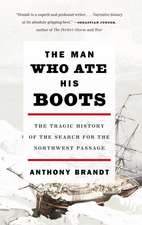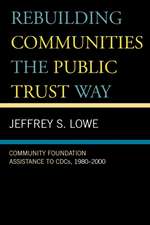The Little White Schoolhouse
Autor Ellis F. Hartforden Limba Engleză Paperback – 30 iun 2004
Few institutions have been held in such fond regard and recalled in such nostalgic terms as the little red schoolhouse. It ranks with the old oaken bucket, the little brown church in the vale, and the pictures of the old home place that millions of people have carried in that "inward eye" mentioned by Wordsworth on that long-past spring day. But the Kentucky common schoolhouses were not painted red as were those of New England; they were mostly white, if not of unpainted log construction.
It was not the simple little boxlike schoolhouse itself that earned all that fond affection. What happened on the way to and from school, on the playground, and within the school walls are all treasured in the memory banks of former pupils in much the same manner as families recall their happy evenings around the fireside or those trips to grandmother's house for Thanksgiving.
But the little white schoolhouse is gone, along with the simple agrarian way of life that characterized the people of the neighborhood to which it belonged. To ensure that this era of education is not forgotten Ellis F. Hartford has presented the history of one-room schoolhouses in the Commonwealth, showing what has been lost in the passing of this institution of the values that best characterized its time and place. Americans might well seek some of the same strengths and values in their diverse communities that were enjoyed by our ancestors of the old rural-agrarian way of life. We might also strive to obtain schools that fit and belong to their respective communities as did the little white schoolhouse.
Preț: 112.43 lei
Nou
21.51€ • 22.23$ • 17.90£
Carte tipărită la comandă
Livrare economică 19 martie-02 aprilie
Specificații
ISBN-10: 0813191068
Pagini: 128
Dimensiuni: 140 x 216 x 8 mm
Greutate: 0.17 kg
Ediția:Revised
Editura: University Press of Kentucky
Notă biografică
Ellis F. Hartford was a professor of education at the University of Kentucky.
Descriere
Few institutions have been held in such fond regard and recalled in such nostalgic terms as the little red schoolhouse. It ranks with the old oaken bucket, the little brown church in the vale, and the pictures of the old home place that millions of people have carried in that "inward eye" mentioned by Wordsworth on that long-past spring day. But the Kentucky common schoolhouses were not painted red as were those of New England; they were mostly white, if not of unpainted log construction.
It was not the simple little boxlike schoolhouse itself that earned all that fond affection. What happened on the way to and from school, on the playground, and within the school walls are all treasured in the memory banks of former pupils in much the same manner as families recall their happy evenings around the fireside or those trips to grandmother's house for Thanksgiving.
But the little white schoolhouse is gone, along with the simple agrarian way of life that characterized the people of the neighborhood to which it belonged. To ensure that this era of education is not forgotten Ellis F. Hartford has presented the history of one-room schoolhouses in the Commonwealth, showing what has been lost in the passing of this institution of the values that best characterized its time and place. Americans might well seek some of the same strengths and values in their diverse communities that were enjoyed by our ancestors of the old rural-agrarian way of life. We might also strive to obtain schools that fit and belong to their respective communities as did the little white schoolhouse.

















